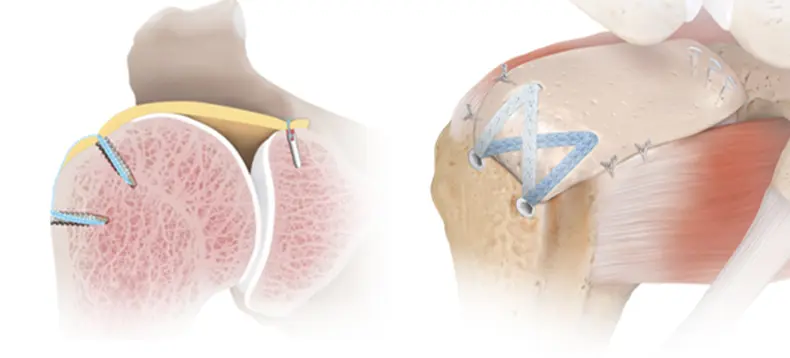Superior Capsule Reconstruction
Large Rotator Cuff Tears
Some patients have massive rotator cuff tears which cause pain, weakness and loss of motion. If the tears are so severe that the tendon cannot be restored to its normal position, it may be irreparable. In these cases, there is an associated defect of the superior capsule, which is like the roof of the shoulder joint. If this is lost, then the humeral head (ball) can escape or migrate superiorly, resulting in significant loss of function.
Different treatments for patients with these large tears include non-operative, symptomatic management, surgical debridement or a ‘clean-up’ of the shoulder, and tendon transfers. These options whilst helpful, have not reliably reduced pain or increased function. Otherwise, the only other option for these patients is to consider reverse total shoulder replacement.
Superior Capsule Reconstruction
Superior capsule reconstruction (SCR) is a new treatment option, developed around 5 years ago in Japan, for treating patients with irreparable rotator cuff tears. A thick sheet of graft tissue is used to bridge the gap, preventing superior migration and re-establishing balance to the shoulder. This can help to reduce pain, restore shoulder function and may also prevent or delay the development of cuff tear arthropathy and the need for a reverse total shoulder replacement.
The results of this procedure have been extremely promising for hundreds of patients worldwide, and it has now been adopted by some of the world’s leading shoulder surgeons.

Surgery
Mr Chua performs this highly technical procedure arthroscopically (keyhole surgery) and if there is any other damage inside the shoulder e.g to the biceps tendon, this can be addressed at the same time. The graft can be either tissue from your thigh or a human dermal allograft. Mr Chua will discuss the various advantages and disadvantages with you before deciding on the best graft choice for your case. After surgery your arm will be in a sling for around six weeks and a physiotherapist will see you before you leave hospital to start your rehabilitation with some simple exercises.

